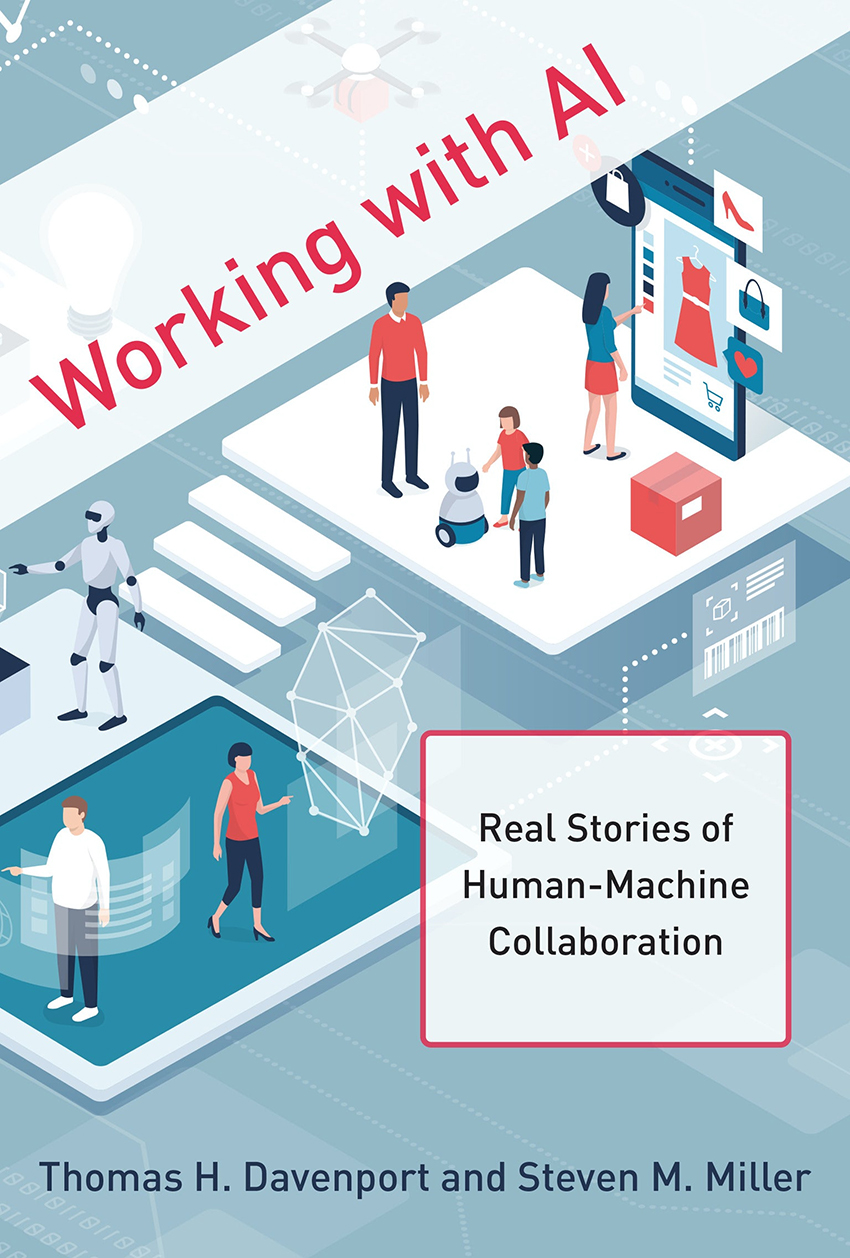By Ray Bert
Working with AI: Real Stories of Human-Machine Collaboration, by Thomas H. Davenport and Steven M. Miller. Cambridge, Mass: The MIT Press, 2022; 312 pages, $34.95.
For many decades, the sci-fi genre has given us regular doses of “what if?” tales built around the dangers of artificial intelligence run amok, from the archetypal Terminator and Matrix movies to many others. Besides being entertainingly diverting worst-case scenarios of AI becoming self-aware and human loathing, these stories mirror our collective underlying unease at the more mundane — yet perhaps scarier — idea that robots are slowly but inexorably destroying peoples’ jobs. That topic has been a popular one with analysts and authors in recent years — many pessimistic, some less so.
Working with AI is intended in part as an answer to those fears via a significantly hopeful near-term outlook. Yes, automation isn’t going anywhere and will continue to increase. But the authors explain that in many or most cases, rather than “full automation” replacement of workers, what is and will be much more common is “partial automation.” Also called “augmentation,” this more symbiotic setup between humans and smart machines and technologies enables human workers to remain in control while working more efficiently at higher-level tasks.
But what sets Working with AI apart is more than the authors’ relatively sunny outlook. Both Thomas H. Davenport and Steven M. Miller had co-authored prior books touching on the collaboration of humans and smart machines, and as professors and like-minded thinkers on the subject, they set out to produce one that all others had thus far lacked: a focus on actual examples of that kind of day-to-day collaboration.
The book’s centerpiece is a series of 29 separate, compact yet information-packed case studies showing the breadth of jobs, processes, and organizations where AI augmentation is already a productive reality. The examples include advanced translation software that still needs skilled human translators to ensure accurate final results that aren’t shorn of context or clumsy to read, rules-based banking transaction surveillance systems that assign risk scores to events that are then reviewed by human analysts, and even “digital weeders” for farm fields, with humans overseeing robots’ pesticide-free weed elimination work and troubleshooting mechanical or other problems.

The authors are not naive; they note that manufacturing jobs, certainly, have been greatly affected by automation — replacing three workers per installed robot by some estimates. They further stress that there will be other areas where full automation is both possible and likely (ranging from pharmacies to visual inspection of silicon wafers for disk drives to making fast food french fries). And, bringing this full circle to those dystopian stories, Davenport and Miller note that if and when the singularity arrives — the point at which AI can do everything better than humans — then “all bets are off.” (They do note that technologists’ predictions for when that point is reached average more than 80 years into the future.)
For now though, Working with AI is by and large a hopeful work about human-machine collaboration, emphasizing that there are still many things that machines simply cannot do — from understanding context to managing organizational change to understanding emotional situations — and thus they will still depend on humans as much as we rely on them. That will likely remain true for us, our children, and our grandchildren. Those great-grandchildren, however … well, they may want to think about how they will discover their Neo or John Connor.



